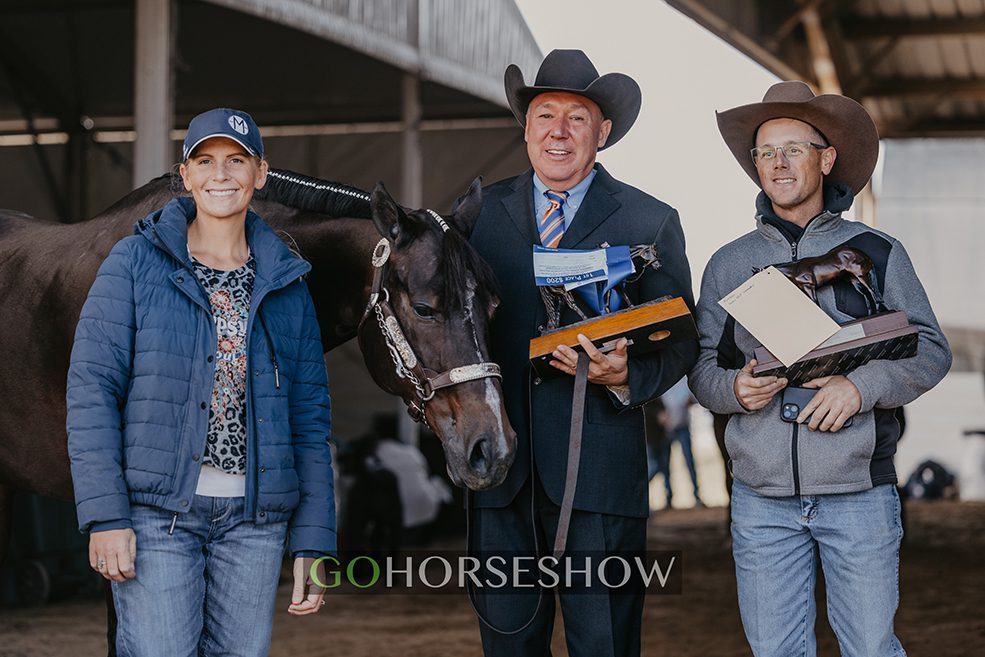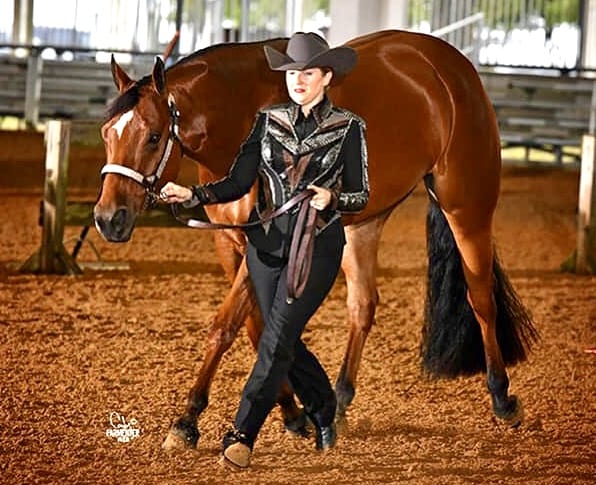In our latest series, “Get the Insider’s Scoop on Learning a New Class,” we are interviewing trainers and leading exhibitors about tips they have for anyone learning a new class.
GoHorseShow is focusing on four of the most popular and difficult classes to learn on the show circuit: showmanship, horsemanship, trail, and western riding. First up…showmanship.
In many ways, showmanship classes give competitors the opportunity to showcase the highest level of partnership between an exhibitor and their horse. Mastering the event requires intense attention to detail, an appreciation for precision, and an equine partner capable of rising to the physical and mental challenges that showmanship presents.
When mastered, an exhibitor and horse will perform a showmanship pattern with the appearance of ease, no matter the realistic complexity of the series of maneuvers. However, maintaining the effortless look necessary in the showmanship arena becomes challenging when an exhibitor is tasked with working alongside a sometimes sluggish, unwilling partner. It is especially difficult when a newcomer is learning the class.
Let’s find out what tips Congress and World Champion exhibitors and trainers have about this very detailed and tough class.
Watch the Winners
“Showmanship is a very specialized class, but all of our classes have gotten just so detailed and competitive,” says Ohio trainer Lynne Puthoff. “I have a new youth that has never shown horses before and is so willing to learn and practice, which makes my job much less complicated, at least in the motivation department.”
Puthoff says she has them watch a lot of world show videos and then watch a few of her practice sessions with her other clients. Then, she filters them into their practice sessions.
“This weekend at his first show, I had him practice with us, but then just watch the actual showmanship classes the next morning,” Lynne says. “He feels it makes more sense to him now and so we will continue to prep him to actually show in the class in two weeks.”
 Recent AQHA Select Amateur Congress Showmanship Champion Joe Whitt also suggests newcomers to watch and learn.
Recent AQHA Select Amateur Congress Showmanship Champion Joe Whitt also suggests newcomers to watch and learn.
“I think it is crucial to visualize what the winners look like in this class when you are starting out. If you can take time to watch with your trainer or coach, that is beneficial,” Whitt says. “For me, things register when I hear them from someone besides my trainer or coach, and I can visualize someone else practicing or showing.”
Joe says if you are a DIY, take time to watch when great showmanship coaches are coaching or great showman are practicing. “I love to listen to Valerie Kerns and Jason Gilliam coach showmanship, and I love to watch Kaleena Weakly, Jessica Baird, Patty Bogosh practice and show. Find someone in your area and take time to watch and learn.”
Whitt adds, “Also, don’t be afraid to ask a non-pro questions or for help. Most of us are very willing to help. Practice. Patience. Paying attention equals success.
Be Accurate
Georgia trainer Blake Carney says it’s very easy to watch the high end showmanship horses and exhibitors and try to rush the process. “Always remember that accuracy and straightness wins over going fast and sloppy.”
Carney says to work on learning to move your horse’s feet and try to move small amounts with your corrections. “When you want to work on your pivot, keep it simple to start. Accuracy over everything. Work on your confidence and ring presence. Most importantly, make sure you are getting good, positive guidance.”
 Arizona amateur Julie Hoefling says that someone who is learning showmanship or new to the class should really concentrate on their footwork. “The goal is to keep it really natural and cadenced, so practicing it to the point where it becomes an afterthought is going to be really helpful. I found that walking or hiking on uneven ground really helped my balance and footsteps which I could then apply to the uneven ground in the arena.”
Arizona amateur Julie Hoefling says that someone who is learning showmanship or new to the class should really concentrate on their footwork. “The goal is to keep it really natural and cadenced, so practicing it to the point where it becomes an afterthought is going to be really helpful. I found that walking or hiking on uneven ground really helped my balance and footsteps which I could then apply to the uneven ground in the arena.”
Be Patient
Whitt says that, “Patience is key in showmanship, and I practice parts of the showmanship and try to focus on each part when I am practicing.”
One day, Whitt may focus on the back, one day the turn or the walking and trotting. “When you are starting out, I think it is important to work on timing with your horse, so do a lot of walking and trotting and get those down first before you move to the more technical parts of showmanship.”
Joe says to always remember that your horse’s body needs to be straight, so no matter what maneuver you are doing, focus on body position. “Practice setting up, but always get control of your horse’s feet, don’t let the horse move unless you ask for it. One thing that is key when showing is to be realistic about your horse’s strengths and weakness. Focus on the strengths and manage the weaknesses.”
Bond with Your Horse
“Showmanship is a class where it’s all about the communication between you and your horse,” states Paige Wacker, a top amateur who has won multiple titles in the showmanship. “When learning or teaching a horse, make sure you keep your cues consistent and simple. In coordination, be conscious of your positioning on the horse’s head or neck. If you’re not in the appropriate position, you can’t expect your horse to perform the maneuver accurately.”
Wacker says that this class is all about the bond and relationship you have with your horse. “Have fun with it. I teach all of mine to bow for treats, stretch, etc. It’s all about the little things.”
Get Help from a Professional
AQHA Professional Horseman Kelly McDowall says that his advice would be to have a professional help. “Even if it is just day help at home or at a show, having experienced eyes on you is the most important thing if it’s your first time showing or an experienced veteran of the class.”
 Amateur Beckie Peskin agrees, watch others and get help. “Showmanship is so different than the riding events that I think it is intimidating for some folks to dive into. My advice to someone just starting is – spend time watching. The show pen, but also the warm up pen. Watch what is winning and watch what isn’t. Pick someone who you love the style of and think about why you love it. Look at how they lay out their patterns, what their horse looks like and how it carries itself. Think about how different everyone manages their warm up time – much of that depends on the horse. Some require more, some less. And then talk to your trainer (if you have one) or someone you respect if you have questions or are struggling with a maneuver. So many folks are willing to help.”
Amateur Beckie Peskin agrees, watch others and get help. “Showmanship is so different than the riding events that I think it is intimidating for some folks to dive into. My advice to someone just starting is – spend time watching. The show pen, but also the warm up pen. Watch what is winning and watch what isn’t. Pick someone who you love the style of and think about why you love it. Look at how they lay out their patterns, what their horse looks like and how it carries itself. Think about how different everyone manages their warm up time – much of that depends on the horse. Some require more, some less. And then talk to your trainer (if you have one) or someone you respect if you have questions or are struggling with a maneuver. So many folks are willing to help.”
Stay tuned for part 2 in our series – Next up…horsemanship









